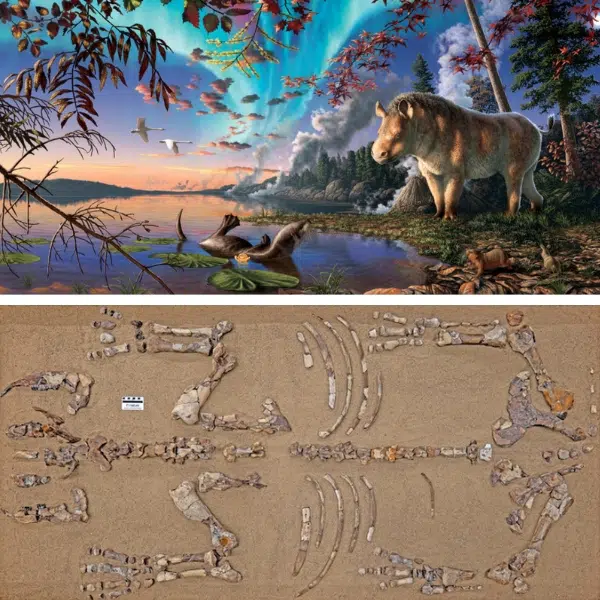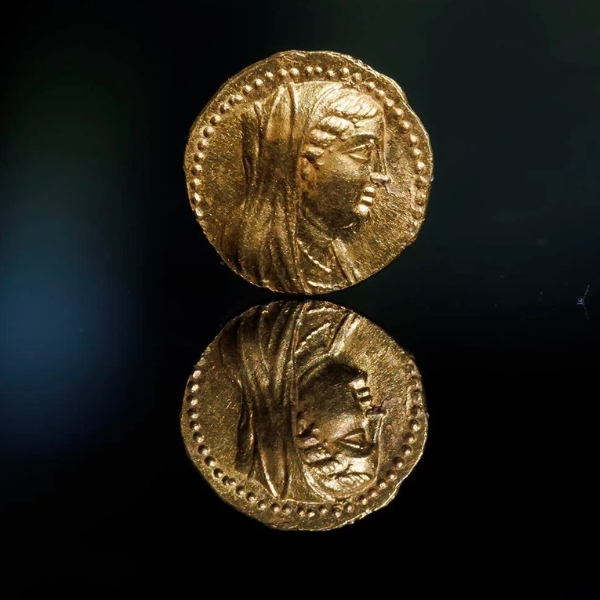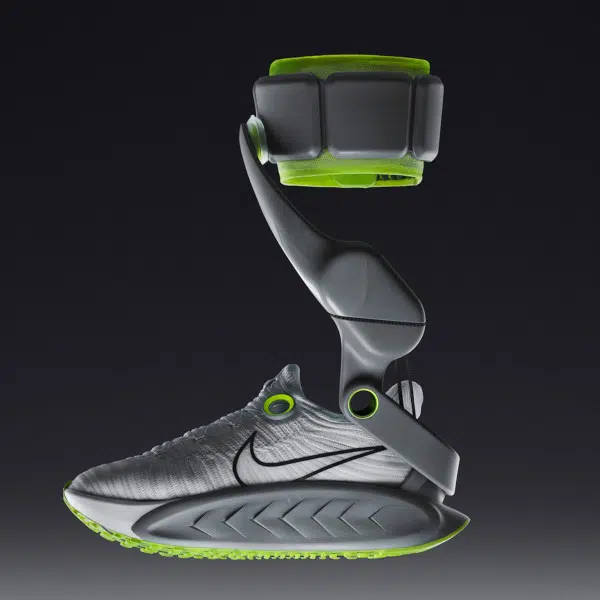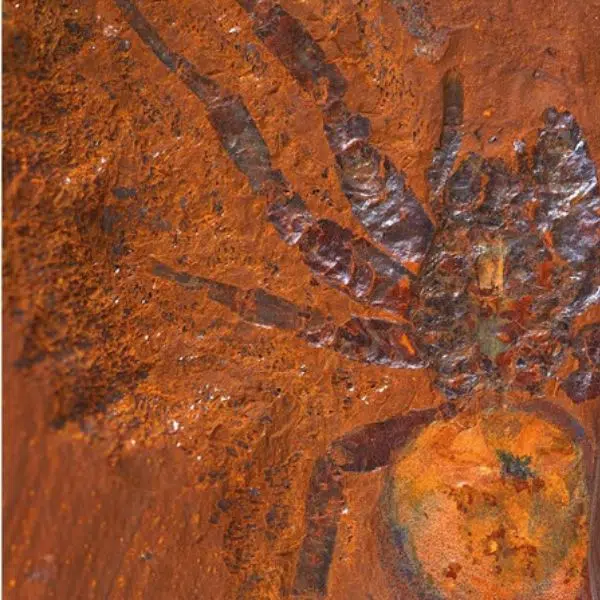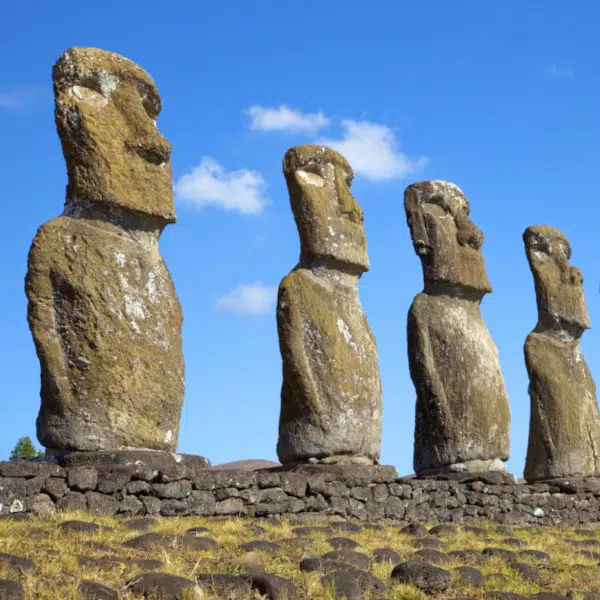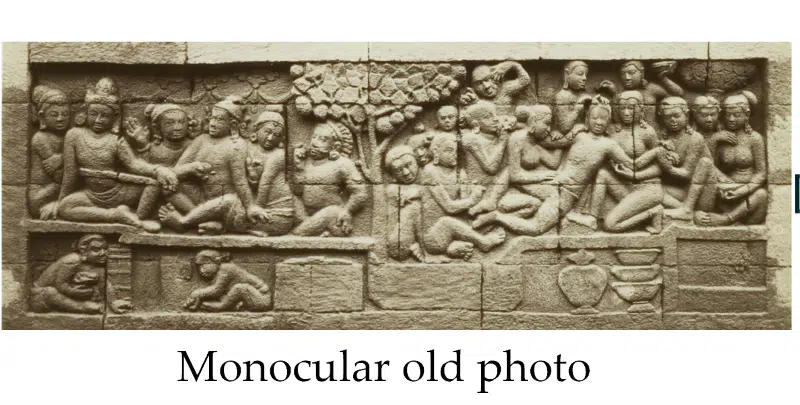
Researchers from Japan's Ritsumeikan University have found a way to bring hidden pieces of history to life using cutting-edge technology. Led by Professor Satoshi Tanaka, they developed a method to take any 2D photograph of a relief and transform it into a digital 3D reconstruction.
In October, they demonstrated their method at an international conference in Australia and published their work. Using a 134-year-old photograph from Indonesia's Borobudur Temple, they showed the incredible work this neural network can perform. The largest Buddhist temple in the world, Borobudur is covered in 2,672 relief panels. Built in the 9th century CE, it was eventually abandoned, only to be discovered centuries later by Dutch archeologists.
After the discovery in the 18th century, reconstruction work led to many of the lower relief panels being covered as wall reinforcements were necessary. Before being covered, they were photographed, and these are the images from which the team worked. The results are an improvement over previous attempts, which were unable to reproduce finer details like human faces and decorations.
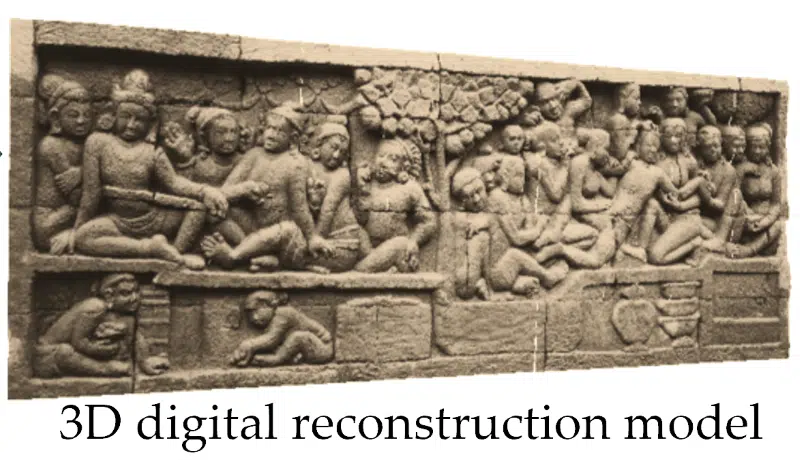
“Our multi-task neural network successfully reconstructed these hidden sections of Borobudur’s ground-level reliefs from surviving old photographs. Through computer visualization and virtual reality, our research now allows virtual exploration of these unseen treasures,” says Prof. Tanaka.
By enhancing the depth estimation, particularly around soft edges, they were able to produce images that more accurately represent the original reliefs. The technique is a breakthrough, as 3D scanning and photogrammetry can only record reliefs in their current state, whereas 3D digital restoration returns us back to the original.
“Our technology holds vast potential for preserving and sharing cultural heritage,” shares Prof. Tanaka. “It opens new opportunities not only for archeologists but also for immersive virtual experiences through VR and metaverse technologies, preserving global heritage for future generations.”
Researchers from Japan have developed a method to take any 2D photograph of a relief and transform it into a digital 3D reconstruction.
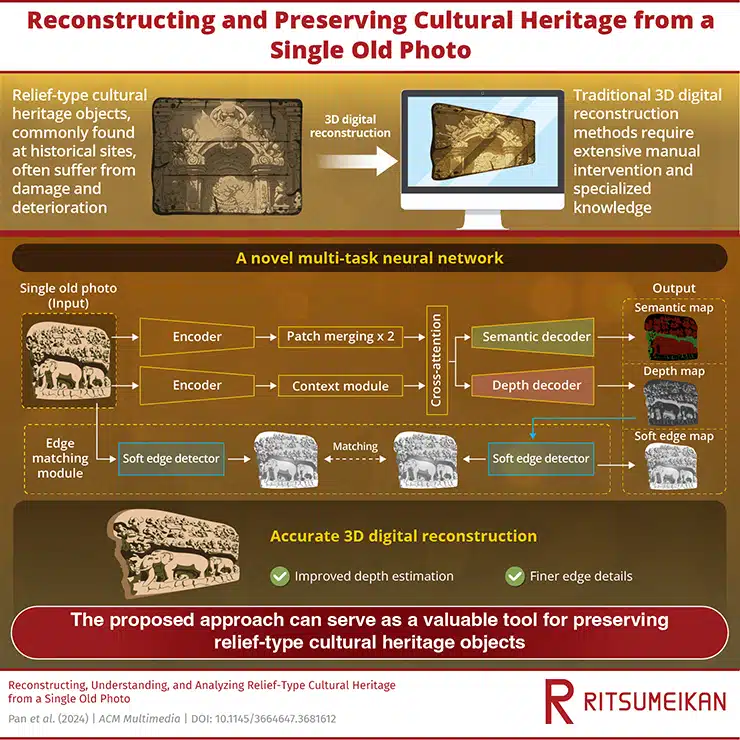
h/t: [PetaPixel]
All images via Pan et al. 2024.
Related Articles:
3D Technology Reveals More Than 40 Medieval Shipwrecks in the Black Sea
Laser Mapping Unearths 60,000 Ancient Maya Structures in Guatemalan Jungle
Students Use AI To Decipher Words of Ancient Scroll Burned by Mount Vesuvius












































































